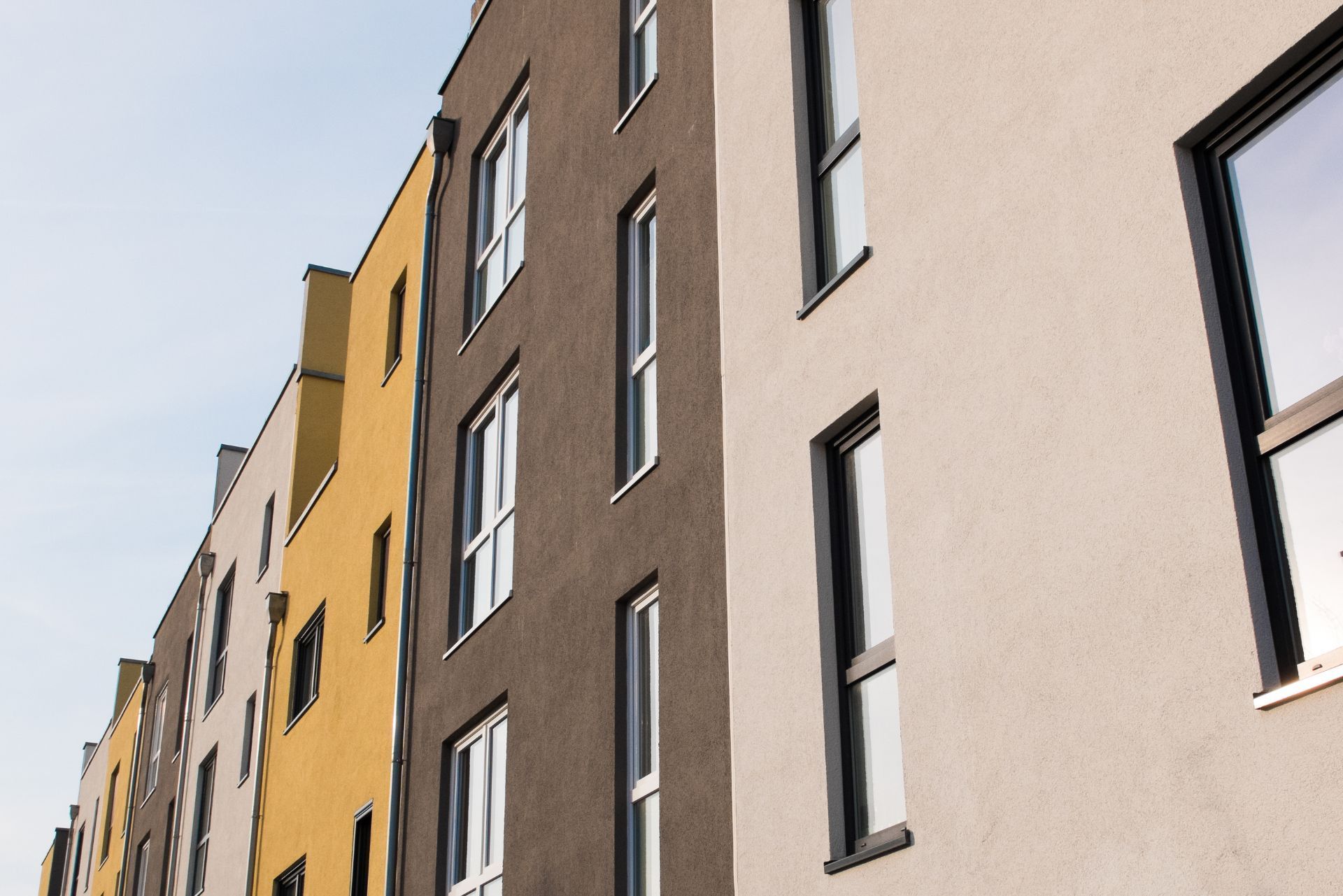Top 3 Recommended Policies

Investing in Class B multifamily apartments in Tennessee offers a promising opportunity, but it also comes with unique challenges—particularly when it comes to insurance. With the multifamily market evolving rapidly, understanding the nuances of property insurance, market dynamics, and financial risks is crucial for owners, investors, and developers alike. This comprehensive guide delves into everything you need to know about insurance for Tennessee’s Class B multifamily apartments, backed by the latest market data and expert insights.
Understanding Class B Multifamily Apartments in Tennessee
Class B multifamily properties typically represent older buildings that are well-maintained but may lack some of the modern amenities found in Class A buildings. In Tennessee, these assets are a significant part of the housing market, especially in growing cities like Chattanooga and Knoxville. Investors often find Class B properties attractive due to their balance of affordability, occupancy rates, and potential for value-add improvements.
However, the market for these properties is currently experiencing some pressure. A record 2,695 new multifamily units were delivered in 2024, creating increased competition, especially in Class B submarkets. This surge is contributing to a softening of rents and occupancy levels, which directly impacts the financial performance and risk profile of these assets (Matthews).
Despite these challenges, Class B multifamily apartments can still offer unique opportunities for savvy investors. Many of these properties are located in established neighborhoods with access to essential services and infrastructure, making them appealing to a wide range of renters, from young professionals to families. Additionally, the potential for renovations and upgrades can significantly enhance the value of these properties. Investors can implement strategic improvements, such as modernizing kitchens and bathrooms or enhancing common areas, to attract higher-paying tenants and increase overall rental income.
Furthermore, the demographic trends in Tennessee are also playing a crucial role in shaping the demand for Class B multifamily housing. As more people relocate to the state for its affordable cost of living and vibrant culture, the need for diverse housing options continues to grow. This influx of residents presents an opportunity for investors to capitalize on the evolving market by identifying properties that can be repositioned or upgraded to meet the demands of a changing tenant base. With careful management and a keen eye for potential, Class B multifamily apartments can remain a resilient segment of the real estate market, even amidst increasing competition.

The Current Multifamily Insurance Landscape in Tennessee
One of the most pressing issues facing Class B multifamily owners in Tennessee is the rising cost of property insurance. Over the past year, insurance premiums have increased by an average of 26%, a trend echoed nationwide. This spike is not only squeezing operating budgets but also influencing decisions around new developments and renovations in the affordable housing sector.
Insurance providers are becoming more cautious due to increased claims and the growing frequency of natural disasters, which has led to stricter underwriting standards and higher premiums. For many portfolios, especially those with older buildings typical of Class B assets, this means that even a single insurance claim can lead to significant financial stress (Federal Reserve Bank of Minneapolis).
Why Are Insurance Costs Rising?
The multifamily sector in Tennessee is feeling the impact of broader national trends. Factors such as increased construction costs, higher replacement values, and the growing risk of severe weather events contribute to the rising premiums. Additionally, insurers are recalibrating their risk models, which often results in higher rates for older buildings that may not meet current safety codes or have deferred maintenance issues.
For Class B properties, which often require ongoing capital improvements, these insurance cost increases can be particularly challenging. Owners must balance the need for upgrades to reduce risk and improve tenant satisfaction against the rising expense of coverage. Furthermore, the competitive rental market in Tennessee is pushing landlords to keep rents affordable, which complicates their ability to pass on these increased costs to tenants. This delicate balancing act can lead to difficult decisions about whether to invest in necessary renovations or to absorb the costs, potentially impacting the overall quality of housing available.
Moreover, the implications of rising insurance costs extend beyond just financial strain. They can also affect tenant stability and community cohesion. As property owners grapple with these challenges, they may be forced to make tough choices about tenant retention strategies, maintenance schedules, and even the types of amenities they can offer. This can lead to a ripple effect, where neighborhoods that once thrived on diverse housing options may see a decline in quality and accessibility, ultimately affecting the local economy and community well-being.
Market Trends Affecting Insurance and Investment Decisions
Multifamily cap rates for Class B assets in Tennessee have compressed to around 4.92%, reflecting strong investor demand despite some market headwinds. This compression indicates that investors are willing to accept lower yields, likely due to the perceived stability of multifamily housing compared to other asset classes (Apartment Loan Store).
However, the flat multifamily rent growth reported in Q1 of 2025 signals a plateau in revenue growth, which can complicate underwriting assumptions and insurance budgeting. With rent growth stalling, owners may find it harder to offset rising insurance and maintenance costs through increased income (Fannie Mae).
Absorption and Occupancy Dynamics
Despite the influx of new units, absorption rates remain healthy in some Tennessee markets. For example, Chattanooga has absorbed approximately 1,000 units over the past year, indicating ongoing demand for multifamily housing. This absorption helps stabilize occupancy rates, which is critical for maintaining insurance eligibility and favorable terms.
Still, the pressure on rents and occupancy in Class B submarkets means that owners need to be strategic. Maintaining high occupancy and minimizing claims through proactive property management can help control insurance costs and protect investment returns (Matthews).
Additionally, the evolving demographics in Tennessee are influencing market dynamics. With an increasing number of young professionals and families seeking affordable housing options, multifamily properties are becoming more attractive. This demographic shift not only fuels demand but also encourages property owners to enhance amenities and services, which can further differentiate their offerings in a competitive market. As amenities such as co-working spaces and fitness centers become standard, owners who invest in these upgrades may find themselves better positioned to attract and retain tenants, thus enhancing their overall investment appeal.
Moreover, the impact of economic factors such as interest rates and inflation cannot be overlooked. As the Federal Reserve adjusts its monetary policy, the cost of borrowing may fluctuate, affecting both investment strategies and operational costs for property owners. Higher interest rates could lead to increased financing costs, making it essential for investors to carefully evaluate their capital structures and insurance coverage. In this environment, a thorough understanding of market trends and proactive financial planning will be vital for navigating potential risks and seizing opportunities in the multifamily sector.
Key Insurance Considerations for Tennessee Class B Multifamily Owners
Given the current environment, multifamily property owners in Tennessee should carefully evaluate their insurance policies and risk management strategies. Here are some critical considerations:
1. Coverage Adequacy and Policy Limits
Ensuring that insurance coverage aligns with the replacement cost of the property is essential. Underinsuring can lead to significant out-of-pocket expenses in the event of a claim, while overinsuring increases premium costs unnecessarily. Regular property valuations and risk assessments can help maintain the right balance. Owners should also consider the impact of local market conditions and inflation on property values, as these factors can change rapidly and affect the adequacy of coverage. Engaging with a knowledgeable insurance broker can provide insights into market trends and help ensure that policies are updated accordingly.
2. Risk Mitigation and Property Maintenance
Proactive maintenance and upgrades can reduce the likelihood of claims. For Class B properties, investing in fire safety systems, roof repairs, and plumbing updates not only protects tenants but also signals to insurers that risks are being managed effectively. Additionally, implementing regular inspections and maintenance schedules can help identify potential issues before they escalate into costly repairs or claims. Property owners may also want to consider tenant education programs that promote safety and awareness, further reducing the risk of incidents that could lead to insurance claims.
3. Impact of Claims History
Insurance carriers closely scrutinize claims history. Multiple claims within a short period can lead to premium hikes or even policy non-renewal. Owners should implement robust risk management practices to minimize incidents and document all preventive measures. Keeping detailed records of maintenance activities, tenant communications, and any incidents can provide valuable context for insurers and may help mitigate the impact of past claims on future premiums. Additionally, engaging in loss control programs offered by insurers can demonstrate a commitment to risk management and potentially lead to discounts on premiums.
4. Exploring Alternative Insurance Options
Given the rising costs, some owners are exploring alternative insurance markets, including captives or risk retention groups. While these options require more administrative effort, they can provide cost savings and more tailored coverage solutions. Owners should thoroughly evaluate the financial stability and claims handling reputation of alternative insurers, as well as the specific terms and conditions of coverage. Networking with other multifamily property owners can also yield insights into successful strategies and experiences with alternative insurance models, helping owners make informed decisions about their insurance needs.

The Future Outlook for Tennessee’s Class B Multifamily Insurance
Looking ahead, the insurance landscape for Class B multifamily apartments in Tennessee is expected to remain challenging but manageable with the right strategies. Market participants should anticipate continued premium increases driven by broader economic and environmental factors. The ongoing effects of climate change, for instance, are prompting insurers to reassess risk models, particularly in areas prone to severe weather events. This shift could lead to more tailored insurance products that address specific regional risks, but it may also contribute to rising costs as insurers seek to mitigate potential losses.
However, with multifamily cap rates compressed to historic lows, investors remain committed to these assets, viewing them as stable income generators. This commitment suggests that insurance providers will continue to offer coverage, albeit at higher prices and with more stringent underwriting requirements. Investors are increasingly looking for ways to enhance property value and resilience, which may include investing in energy-efficient upgrades or disaster preparedness measures. Such improvements not only appeal to environmentally conscious tenants but can also lead to favorable insurance premiums over time.
Owners who prioritize risk management, maintain strong occupancy, and stay informed about market trends will be best positioned to navigate the evolving insurance environment. Engaging with local real estate associations and attending industry conferences can also provide networking opportunities and insights into best practices for risk mitigation. By fostering relationships with insurance brokers who specialize in multifamily housing, property owners can gain access to customized coverage options that align with their specific needs and risk profiles.
Staying Informed and Engaged
Regularly reviewing market reports and expert analyses can provide valuable insights. For instance, the
Apartment Loan Store and the
Federal Reserve Bank of Minneapolis offer timely updates on cap rates and insurance cost trends that can inform strategic decisions. Additionally, subscribing to industry newsletters or participating in webinars can provide ongoing education about emerging risks and innovative solutions in the multifamily insurance sector. Staying connected with these resources not only enhances knowledge but also empowers property owners to make proactive adjustments to their insurance strategies, ensuring they remain competitive in a rapidly changing market.
Conclusion
Insurance is a critical component of managing Class B multifamily apartments in Tennessee. With rising premiums, competitive market conditions, and evolving risk factors, owners and investors must take a proactive approach to insurance and risk management. By understanding the current landscape, leveraging market data, and implementing best practices, stakeholders can protect their investments and ensure long-term success in this dynamic sector.
For those navigating Tennessee’s multifamily market, staying informed and adaptable is key to overcoming insurance challenges and capitalizing on opportunities.
Contact Us


